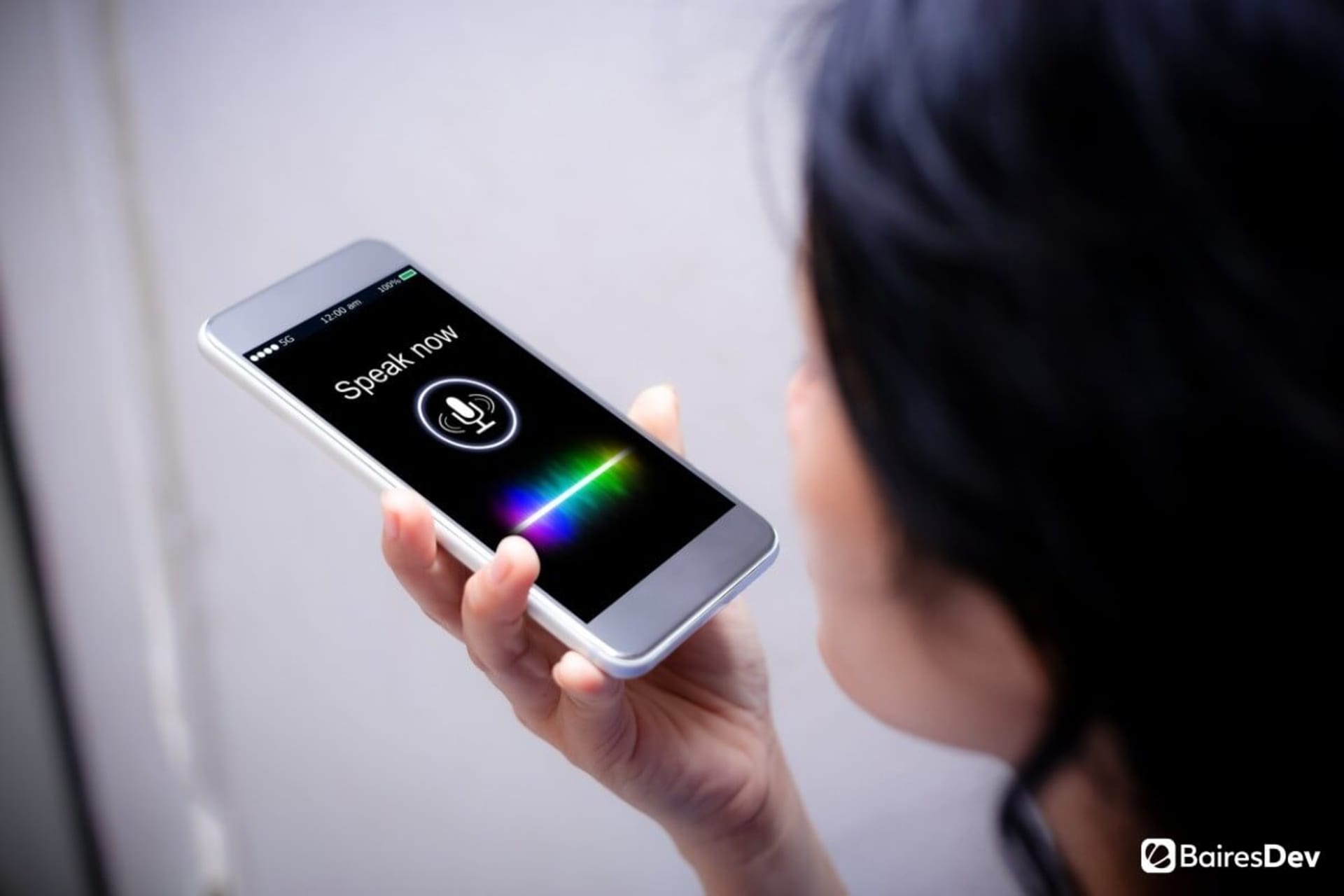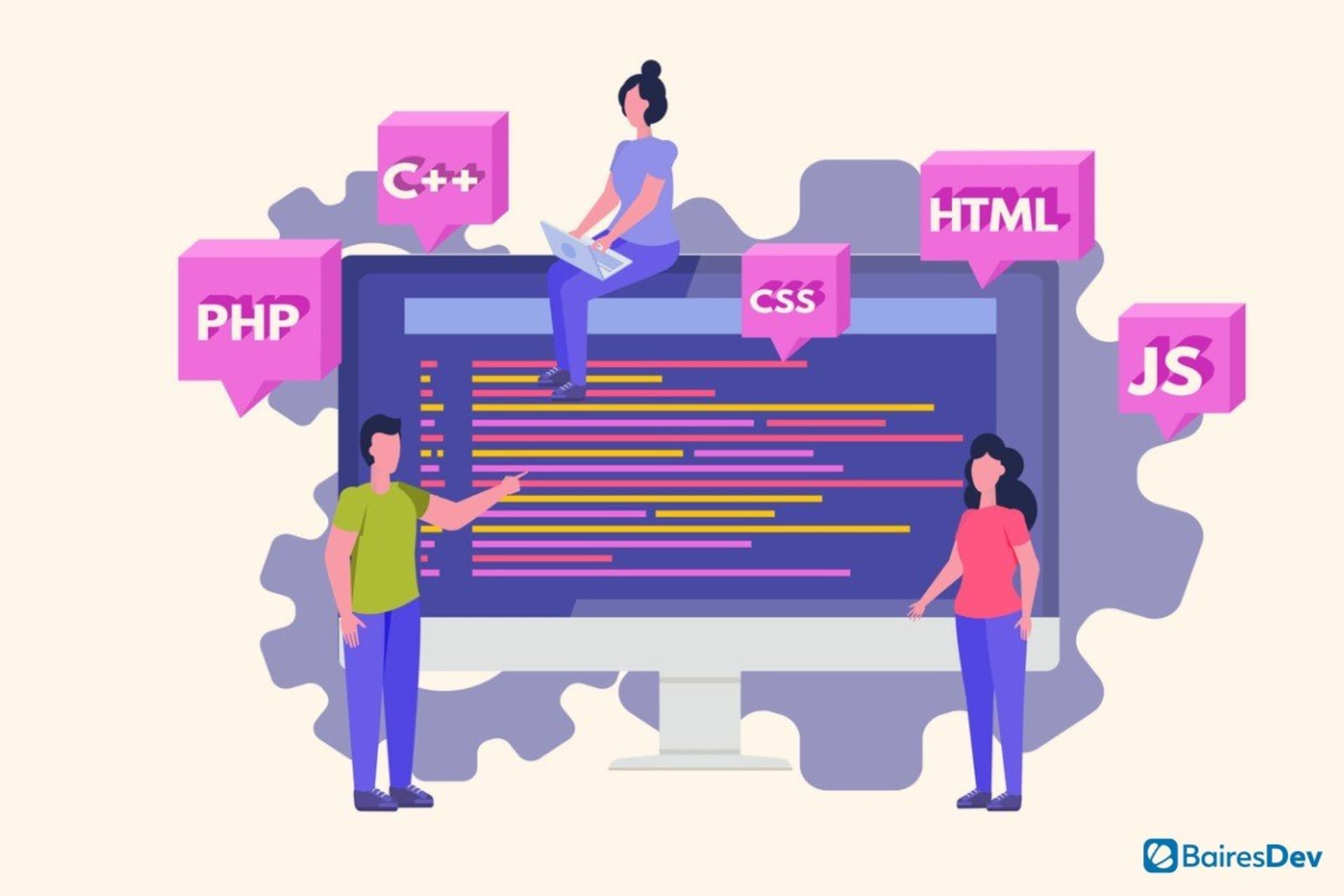Voice technology has been available for many years and can be seen in such inventions as smart speakers and voice control in cars. Recent advancements have enabled businesses to deploy it for many new applications that make use of the ability to input data via voice control, and the ability to receive information from computers in a more understandable way. Both of these outcomes enable a more natural relationship between humans and computers, which yields greater efficiency, trust, and decision-making capabilities.
A recent Forbes Technology Council article notes, “Revolutionary speech recognition provides the world with modern, optimal toolsets for business that include new intent and sentiment analysis, speaker identification and statistical demographics that are driven by advanced voice biometrics and speech recognition.” In the following sections, we explore some of these developments and others in voice technology and how they will shape business in the coming years.
1. Custom Digital Voices
Just as companies have their own logos and typefaces, they can develop a unique digital voice that customers recognize as belonging to that brand (think Siri and Apple). These voices can be deployed across a wide variety of interactions to support a seamless and consistent experience. For example, when a customer hears the same voice across multiple platforms, no matter where they engage with the company, they get a reassuring sense of convenience, recognition, and trust.
Technologies like natural language understanding (NLU), conversational artificial intelligence (AI), and neural text-to-speech (TTS) allow digital voices to sound more like human ones.
2. Data Analysis
Like other types of information, voice data can be analyzed for a variety of purposes. And there is great potential here, given that only a small percentage of call center voice interactions are analyzed now. Factors like age, gender, location, and emotion can be compiled to understand more about customer motivations, preferences, and concerns. Such analyses can prove invaluable in decision-making for activities like developing new products and services, creating promotional campaigns, and improving customer care.
3. Increasing Flexibility
The Forbes Technology Council article points out that companies can now leverage a single API format, which increases flexibility in the use of voice technology and offers several key benefits. They include the following abilities:
- To use any audio format, including telephony, online, or mobile
- To support a better understanding of customer intent
- To drive the evolution of IoT and cybersecurity processes such as anti-spoofing and authenticating users
4. Better Understanding
The technologies mentioned above that enable a more human-like sound also allow machines to offer greater comprehension. NLU supports comprehension of brief information inputs like short commands as well as an understanding of more complex data like news articles. Working in conjunction with AI, it enables speech recognition, including language translation. Combined with TTS, these technologies support a voice-enabled system that can respond to customer concerns, complete with appropriate voice inflections based on the situation.
5. Improved Security
Cybersecurity can be enhanced with voice technologies, such as accurate voice recognition. According to a recent TechRepublic article, people’s voices can be recognized based on factors such as tone, pitch, pacing, and fluctuations in sound. The combination of these elements makes each person’s voice unique, and the technology can be deployed without the knowledge of call center callers, for example.
As this technology improves, more companies will use it to identify customers, replacing or complementing things like passwords and other biometrics. For example, banks can use it to protect customer assets, while healthcare providers can use it to ensure they are speaking with the right person during telemedicine consultations.
The recent surge in work-from-home (WFH) jobs offers another opportunity for the use of voice technology for security. Because home offices don’t always include the highest level of protection, voice recognition can be a tool for IT experts to keep company data safe.
6. Transcription and Dictation
Voice recognition can be used instead of writing or typing to dictate notes or draft documents. Automatic transcription can be helpful when you want a written record of a conversation, interview, meeting, or other important voice-based communication. Both of these functionalities are available now with a range of software offerings.
However, both of these technologies are still in their early stages and have pros and cons. For example, the software may not be entirely accurate, especially in situations that require greater context, which humans are better at recognizing. This factor is especially important when dealing with specialized subjects, such as medicine. However, the software is typically much faster than humans performing the same task.
7. Applications Across Industries
Voice technology can be used for specific uses in a variety of fields.
- In higher education, some universities are offering information about their resources through voice-recognition software.
- Healthcare uses include communicating with patients to encourage them in lifestyle changes, including diet, exercise, and the use of medication.
- The conversational capabilities of voice technology have enabled customer care departments to use it for understanding and responding to basic customer requests.
- In public transportation, new features in buses and trains allow passengers to ask for route information
- Voice technology can also be used to create new modes of promoting and selling products, such as voice-enabled SEO search. The video below highlights the importance of search functionality.
Plan Now for Practical Applications
All this new functionality will enable the specific uses listed here as well as many others in the works — including administrative assistant, hands-free activity, and support for human customer care agents — as well as those not yet developed. Companies should start to think about how they might be able to incorporate voice technologies and a “no touch” approach across departments, including ordering, operations, and customer care.
As always, such considerations should be based on meeting actual business needs, rather than adopting technologies because they’re the next great thing. Yet, given the broad range of possibilities for these exciting innovations, many companies are sure to find a good fit between their challenges and voice-based solutions.
FAQs
1. What is voice technology?
Voice technology enables users to interact with technologies using spoken language and commands. It involves concepts like text-to-speech, speech recognition, and natural language processing to interpret human language and respond in a human-like manner.
2. How can voice technology benefit businesses?
Voice technology has the power to completely transform businesses and the customer experience through increased efficiency, data analytics and insights, cost savings, and more.
3. What are some of the industries that can benefit from voice technology?
There are many industries that can benefit from voice technology, such as transportation, education, finance, retail, healthcare, manufacturing, and many others.
4. What are some of the potential applications for voice technology in the future?
Voice technology is evolving and will have numerous applications in the future. For example, it can be used to identify speech patterns that are consistent with certain medical conditions like Parkinson’s disease, thereby assisting with personalized medicine and diagnosis. Additionally, it may be applied to the automotive industry to allow individuals to control various aspects of their driving experiences with their voice alone.







